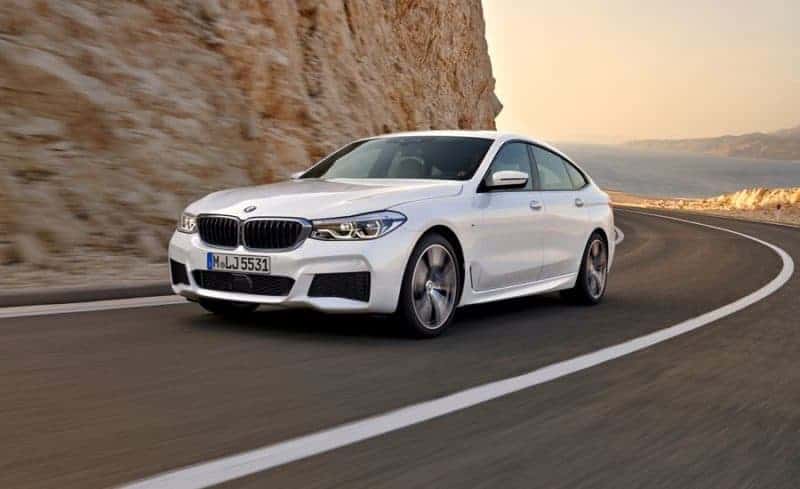Like any serious car manufacturer, BMW can’t afford to stop innovating its lineup. The upcoming batch of 2020 BMW models will be more colorful than usual being bolstered by a number of performance and all-electric vehicles, among others. Considering the German automaker’s lineup is vast and versatile, there’ll be something for everyone. Despite the ever-growing portfolio, the Munich-based carmaker hasn’t achieved its projected successes in the U.S. during the past few years.
Although their global sales amounted to 2,088,283 units in 2017, which is a 4.2 percent increase over 2016, their U.S. sales actually fell from 313,174 to 305,685 units during the same period. Moreover, the Bavarians are not even close to their record year of 2015 when they marketed 346,023 vehicles here.
Looking closer to the present day, BMW’s U.S. sales for the first three quarters of 2018 amounts to 225,065 vehicles which is only slightly better than their result from the same period in 2017 when they marketed 220,175 units. In order to catch up with the undisputed leader in luxury car sales, Mercedes-Benz, the Bavarians will have to make a considerable leap in 2019 or 2020.
As mentioned above, the BMW lineup for MY 2020 will be bolstered by a number of new additions like the iX3 electric crossover, 2 Series Gran Coupe, or full-size X7 SUV. At the same time, the Germans will debut an even greater number of fully or partially redesigned current models like the 3 Series, X6, or 5 Series. In fact, MY 2019 and MY 2020 are probably some of BMW’s most important years in decades, all things considered. If the brand is to take that necessary leap, this will work out for them better. Otherwise, one of the best-known German automakers is in for at least a few more years of biting the Merc’s dust and potentially risking the second spot with Audi hot on their trail.
What’s Hot in the New 2020 BMW Lineup
09. 2020 8 Series Convertible
After bringing back the 8 series coupe after no less than 20 years, the Germans have switched their attention to the convertible version of the future flagship BMW range. Much like the 2-door coupe, the convertible shares the same design and architecture based on the modular CLAR platform.
First previewed at the 2018 LA auto show and available at dealerships across the country since mid-2019, the 8 Series drop-top didn’t exactly spring many surprises. Apart from the obvious and a few extra pounds in weight, the cabriolet also warrants a slightly higher price tag. The weight increase amounts to exactly 275 pounds despite the fact the convertibles sport a soft-top roof.
As for the price – while the coupe starts from just under $88,000, the convertible does so from around $97,500 and its upper echelons cost more than $140,000.
The 2020 8 Series convertible also shares the M850i xDrive coupe’s powertrains. Their initial option was a 4.4L twin-turbo V8 mill capable of cranking up as much as 523 horsepower and 553 pound-feet of rotational force. The lineup has since been expanded with the entry-level 840i and range-topping M8 models. The former use a 335-horsepower 3.0L twin-turbo inline-six engine, while the latter benefits from a 600-hp (617 hp in the Competition form) 4.4L twin-turbo V8 mill. An 8-speed ZF automatic gearbox and all-wheel drive are mandatory across most of the range, but six-cylinder-powered models do get rear-wheel drive as standard.
The newest flagship convertible of the BMW range also benefits from a multilink rear suspension, adaptive dampers, and last but not least, an electronically adjustable limited-slip rear differential. This provides serious grip and performance – as if the coupe’s 0 to 60 time of only 3.6 seconds wasn’t enough of a telltale sign. The soft-top is couple-tenths of a second slower, but we won’t hold that against it.
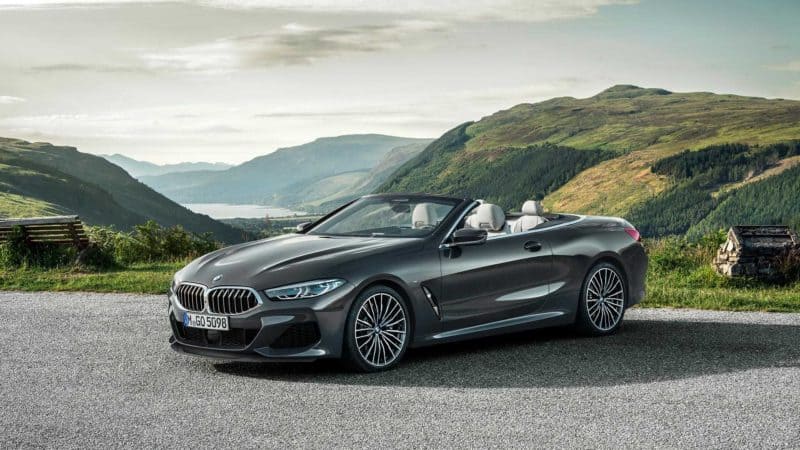
08. 2020 3 Series
The seventh-generation 3 Series was unveiled at the 2018 Paris auto show and has gone on sale in early 2019. It’s fair to say that the previous generation has failed to meet the ever-high expectations, but that’s about to change. The new 3 Series code-named G20 once again focuses on drivers instead of comfort.
The 3 Series remains comfy and plushy, but more fun to drive at the same time thanks to renewed driving mechanics. It’s got overhauled steering, stiffer suspension and new passive dampers to thank for that. Furthermore, the new models are around 120 pounds lighter than the outgoing units despite growing in size slightly. Hopefully, the Germans have done enough to completely overhaul the 3 Series’ dumbed-down driving experience.
Initially, the Germans have only offered a sedan, but a Touring wagon has long-ago been announced for model year 2020. Sadly, this will be the first 3 Series wagon in 20 years that’ll never make it to the U.S. As for the coveted M3 – we’ll have to remain patient for a while longer.
The inaugural BMW 3 Series range consisted of 330i and M340i models. At least on this side of the Atlantic. The overseas markets have instantly benefited from the entry-level 320i petrol and three additional diesel variations.
The BMW 330i is powered by a 255-horsepower 2.0L turbocharged inline-four engine and comes in both front and all-wheel-drive configurations. The stronger M340i models, on the other hand, are motivated by the 382-horsepower 3.0L turbocharged straight-sixes. Regardless of the chosen powertrain, you’re stuck with a ZF 8-speed auto since manual transmission is reserved for the aforementioned entry-level overseas models.
Prices for the entry-level model with a rear-wheel drive start from slightly north of $40,000, while the xDrive system adds another $2,000. The more potent M340i models, on the other hand, start from $54,000 with all-wheel drive requiring the same extra $2,000. As always, the Germans will find a way to squeeze as much green from you as they possibly can if you’re not careful.
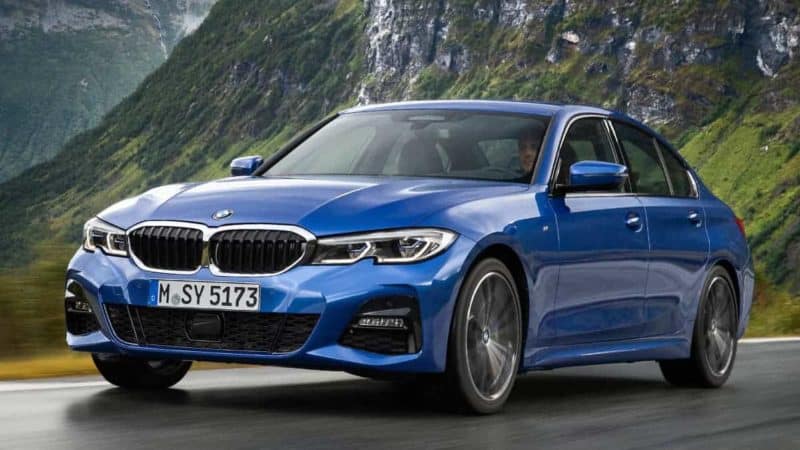
07. 2020 iX3
The BMW brass know how important the EV market will be in the near future. They also know how important it’ll be to keep prices down in order to snag the largest share of the market as possible. Of course, no BMW model comes cheap but not all of them have to be out of most people’s price range.
The compact iX3 EV should fit that description although its actual price tag is anyone’s guess at this point. The small zero-emissions vehicle will – as its name suggests – basically represent an electric take on the X3 and become one of dozen new electric BMW models to come out by 2025. Production will take place in China, while sales are expected to commence in 2020. The iX3 might even arrive as a 2021-year model.
As it’s often the case within the segment, pre-orders have already started in a number of overseas markets like Norway where the EV’s are going through a renaissance of sorts in spite of Scandinavian country’s rich oil deposits.
The concept iX3 which debuted at the 2018 Beijing show sports a 74 kWh lithium-ion battery pack which allows for 273 miles of range according to the new European WLTP cycle. The overall range will surely shrink by a slight margin when the EPA gets a hold of the crossover.
Power comes from a 286-horsepower electric motor which should be more than sufficient for a vehicle of iX3’s caliber. Using a fast 150-kW charger, the iX3 will be able to regenerate more than 190 miles within 30 minutes. The 2020 BMW iX3 obviously can’t compare with the Tesla Model X in that regard but it should also be somewhat more affordable than Tesla’s luxury crossover.
The iX3’s competition will also consist of the smaller Audi e-tron, Jaguar I-Pace, and Mercedes-Benz EQ C, among others. We’ll have to wait and see how it compares to the rest of the pack.
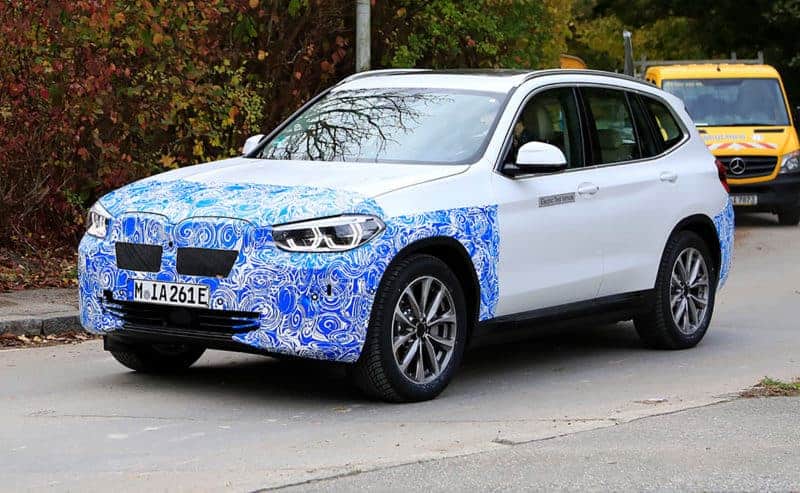
06. 2020 X7
The largest of the BMW SUVs is finally upon us. The Bavarians certainly took their sweet time introducing it while their compatriots ran rampant with the Q7 and GLS for years now. Compared to the previously largest BMW crossover, the X5, the BMW X7 is longer, wider, and taller. It’s also able to fit up to seven passengers. Furthermore, the new SUV has got either 48.6 cubic feet of trunk space with rear seats up or a hefty 90.4 cubes with the last two rows folded.
The interior draws inspiration from the 7 Series, however, as most of the sedan’s bits have been implemented in the large SUV, including a large 12.3-inch touchscreen display. A long list of both convenience and safety gear can push the X7’s prices far from the initial value, but a number of features like parking sensors, lane-keep assist, and blind-spot monitors are all there from the get-go.
Speaking of prices, the entry-level X7 xDrive40i units start from around $74,000 whereas the more expensive xDrive50i models cost almost $93,000. Both have been available since the Spring of 2019. Joining the lineup for MY 2020 is the new range topper, the M50i which requires around $100,000.
Apart from a wide price gap between the models, the xDrive40i and xDrive50i offer different engines as well. The former gets a 3.0L turbocharged straight-six mill good enough for 335 ponies and 330 lb-ft of twist, whereas the latter benefits from a more powerful 4.4L twin-turbo V8 that cranks up 456 hp and a stout 479 lb-ft. As the xDrive bit of their names suggests, both units are available exclusively in an all-wheel-drive configuration and are paired with an 8-speed automatic gearbox.
Those craving for the most potent version can go for the above mentioned new X7 M50i which uses the same 4.4L twin-turbo V8 from the 8 Series coupe. Generating 523 hp and 553 lb-ft of torque, the N63 mill should be able to propel what’s almost a 6,000-pounder to 60 mph in just 4.5 seconds.
The BMW is still quiet on the potential plug-in hybrid variant of their newest flagship SUV, but we do know that there won’t be a performance M version. If the Germans decide to explore the former of these two particular options, they most certainly won’t do so during 2020.
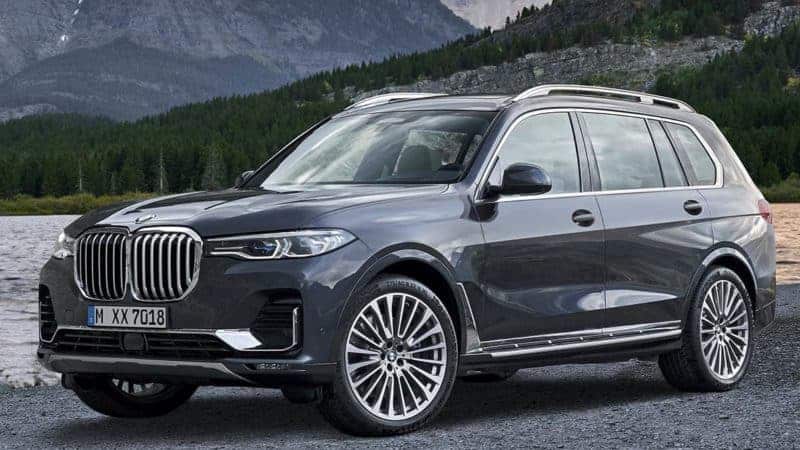
05. 2020 4 Series
The 4 Series is one of the newer BMW lines being introduced in 2013 for the first time. The compact 2 and 4-door coupes, and a 2-door convertible are now seriously showing their age which has prompted the Germans to start working on the next-gen models.
Due to arrive later during 2020, the second-generation 4 Series Coupe will share much of its underpinnings with the newly introduced 3 Series. They’ll also share most of their design cues. The convertible, on the other hand, is due to arrive even later than that – probably in 2021. We do know it’ll ditch the current folding hard-top in favor of a lighter soft-top which should help it shed some weight and become more agile in the process. After all, that’s exactly what the new 3 Series has done.
As for the 4-door Gran Coupe, that one definitely won’t arrive during 2020. Expect the new 4 Series’ prices to remain similar to those of the current models, although we don’t doubt the Germans will find a way to slightly raise them over the $45,000 mark for the coupe and $53,000 for the drop-top.
The powertrain lineup is expected to remain tied to the 3 Series as well, with recent updates to the sedan range incorporated in the coupe and convertible units as well. In other words, expect a 2.0L turbo four and a 3.0L turbocharged straight-six to motivate the compact executive 2-doors. The former will make 255 horsepower, while the latter should be good enough for 382 ponies. The M version will likely join during MY 2021 or later still.
Both engines will be mated to a new ZF eight-speed automatic transmission regardless of whether they’re offered in rear or all-wheel drive configurations. The 4-cylinder will certainly be offered in both configs but it remains to be seen whether the six will follow the same practice or the 3 Series’ example and only offer xDrive instead.
More info will be available closer to the reveal date which should happen sometime in 2020. At least when the 2-door coupe is concerned.
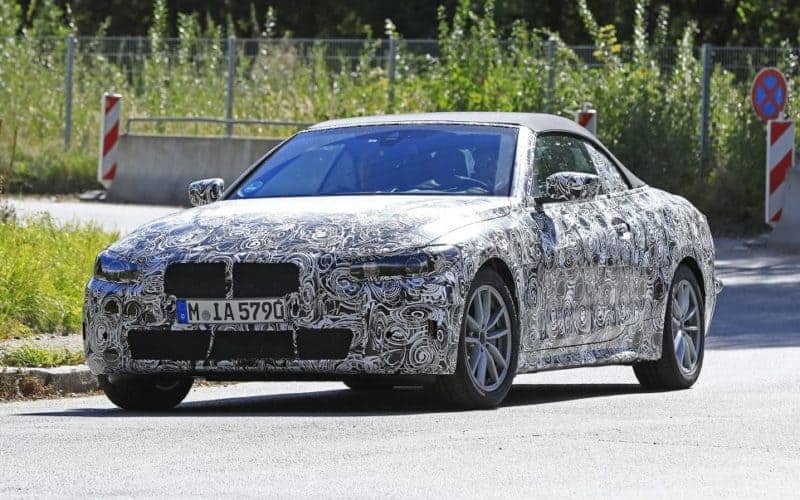
04. 2020 Z4
Developed in collaboration with Toyota, the third-generation BMW Z4 was finally revealed during the 2018 Monterey Car Week. Although a number of people are only interested in the new Bimmer for its ties with the revived Toyota Supra, the roadster deserves all attention it’s been getting.
While its predecessor strayed away from the initially intended path by becoming a bloated comfort-oriented 2-door drop-top, the new car gets back to its roots. It’s sportier and more focused on driving dynamics which should provide lots of fun for anyone behind the wheel. It’s actually one of the most exciting BMW models in years, in that regard.
Design-wise, the all-new Z4 follows the 8 Series’ line, only in a more petite form. The First Edition models that have – as their names aptly suggest – rolled in first, have sported a number of visual enhancements and unique 19-inch wheels. These were slightly more expensive than the entry-level sDrive30i models which start from just under $50,000. At the same time, the range-topping sDrive M40i units cost at least $64,000.
The BMW Z4 is being offered with two different powertrains – both of which are shared with the aforementioned Mk5 Supra. The more potent of the two can be found in the sDrive M40i and First Edition models (which are long gone by now, by the way). It’s a 3.0L turbocharged straight-six capable of putting up 382 horsepower and 369 lb-ft of torque. Paired with a ZF 8-speed automatic, the stronger Z4 can hit 60 mph from a standing start in just 4.4 seconds.
Entry-level units, on the other hand, are available with a 2.0L turbocharged 4-cylinder worthy of 255 ponies and 295 pound-feet of rotational force. Again paired with the automatic, they exhibit a slightly slower acceleration, hitting the 60 mph mark in 5.2 seconds.
Although a proper stick shift was expected to be offered with the roadster, it seems a number of enthusiasts will be left disappointed. Maybe it’ll arrive later on, but that probably won’t be until late 2020 at the earliest, if we ever see one.
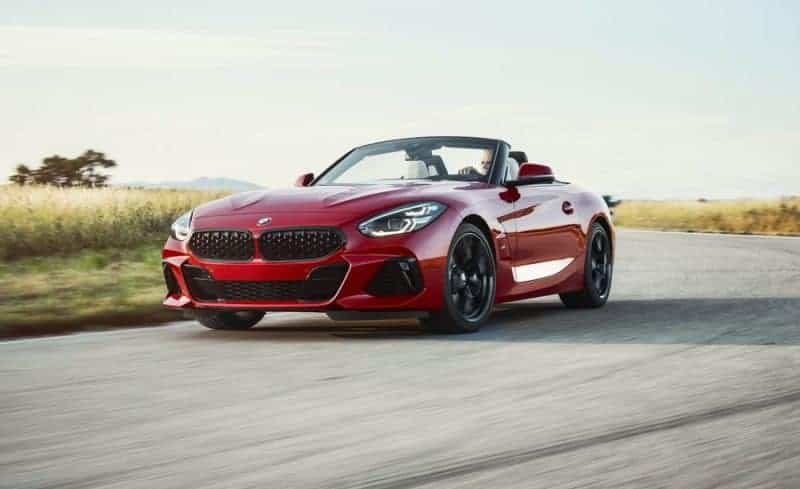
03. 2020 5 Series
The seventh-generation BMW 5 Series was unveiled in late 2016 and went on sale as a 2017-year model. Although BMW’s perennial sedan isn’t the enthusiast’s car it used to be anymore, it’s still one capable, spacious, and refined vehicle with lots of features to satisfy any type of buyer.
The 2020 BMW 5 Series didn’t undergo a mid-cycle facelift but it still offers plenty of changes – especially in the powertrain department. More on that further down. The list of 2020 updates doesn’t stop there as a number of new standard features like in-dash navigation and digital gauge display join the range.
However, don’t expect the overseas estate wagon models to become available stateside. Those looking for a BMW with extra cargo capacity will remain massively disappointed throughout the next few years.
If you’re wondering why the comfortable but otherwise uninspiring 5 Series makes the hotter part of our list here, the answer lies under the hood. Especially under the hood of hot M550i models which have gotten even hotter in 2020 thanks to the new 8 Series. Their 4.4L twin-turbo V8 was initially offered with a more-than-abundant 456 horsepower, but new units now boast 523 ponies instead.
That’s slightly less than what the sixth-generation M5’s had had at 553 ponies, but the new M550i still beats the old M5 in straight-line performance as it requires only 3.7 seconds in order to hit 60 mph from a standing start as opposed to the M5’s 4.4 seconds.
The latest M5 is a different sort of animal, though, as it boasts almost 600 horsepower and accelerates to 60 mph in just 3.4 seconds. What’s more, the M5 badge is celebrating its 35th anniversary in 2020 which will is aptly commemorated with a special limited edition rated at 617 horsepower. Only 350 will be made in total, and only 35 of them will be sold in the U.S. at, as you can expect, extremely high price tags of around $130,000.
The entry-level 540i 5 Series sedan, on the other hand, uses a 3.0L turbocharged straight-six engine, which has also received a substantial horsepower bump. Instead of 335 horsepower it used to make before, it now boasts 382 horses. Much like the new 3 Series or the Z4 roadster, for instance.
Finally, the 530e plug-in hybrid models get a larger new 12-kWh battery pack which they pair with a 2.0L turbo four mill and an electric motor for a combined 248 and 39 MPGe. The diesel-powered 540d models have been axed.
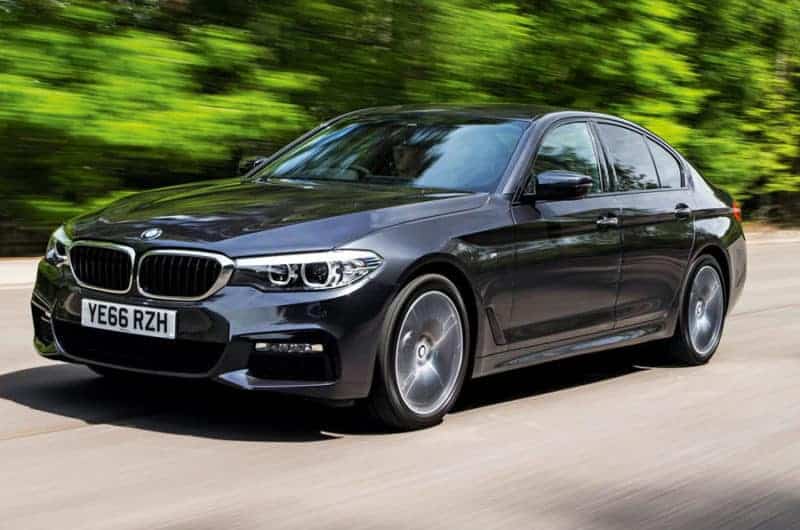
02. 2020 X6
Dubbed the Sports Activity Coupe by the Germans, the BMW X6 hits that sweet spot with an ample amount of ground clearance and a sports car-like design. It does take a penalty in terms of overall practicality, but then again, very few luxury cars are more practical than their non-luxury counterparts to begin with.
The 2020 BMW X6 is now completely redesigned considering the second-generation arrived in now-distant late 2014. The next-gen model is underpinned by the new modular CLAR platform and exhibits similar overall design as the recently facelifted X4. However, most details have actually been borrowed from the X5 SUV.
Apart from being lighter and more sprightly around corners, the new X6 has also grown in size by a slight amount (an inch in length and half an inch in width). Prices start from $65,000 for the xDrive40i models, while the more powerful X6 M50i requires another $20,000 atop of that.
The new BMW X6’s powertrain lineup consists of two different engines the Bavarians usually use in their more expensive models. The base xDrive40i units are offered with a 3.0L turbocharged straight-six mill with 335 horsepower and an 8-speed auto. The higher-grade M50i X6’s boast 523 ponies – courtesy of their 4.4L twin-turbo V8 units. Finally, the third-generation should also spawn the M version of the coupe-like crossover which will sit at the top of the X6 pantheon.
Much like the M5 and upcoming X5 M, the X6 M should be able to provide around 600 horsepower and 553 lb-ft of rotational force thanks to an uptuned version of the 4.4L twin-turbo V8 mill. Expect the most powerful of X6 models to trail the conventional units by between a few months and a year, and warrant a sticker that’ll easily surpass the $110,000 mark.
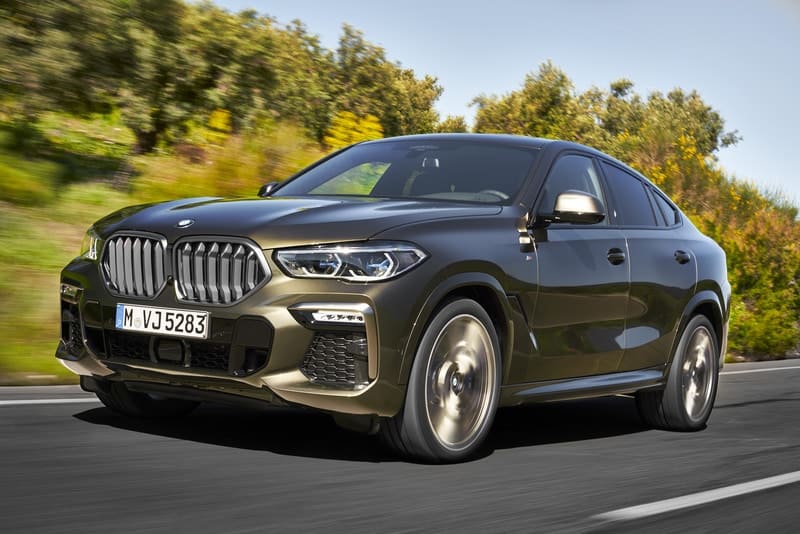
01. 2020 X5 M
The all-new X5 M is more proof that the Bavarian automaker isn’t putting its focus on zero-emissions vehicles in front of their commitment to performance. After all, performance is in their essence.
The new fourth-generation X5 crossover SUV was launched only recently as a 2019-year model and the Germans didn’t waste time providing another perspective for their mid-size luxury goldmine.
The 2020 BMW X5 M is similar to conventional models in many ways. However, a lowered suspension, quad exhaust tips, and unique large wheels serve as a differentiating factor – from the outside, that is. The F95-generation X5 M is also lighter than its predecessor thanks to the modified CLAR architecture. It starts from $106,000.
Down under, the M version of the SUV differs even more. Its 4.4L twin-turbo V8 mill is more than able to crank up as much as 600 horsepower and 553 lb-ft of twist which are routed to all four corners via an 8-speed automatic ZF gearbox. The highly advanced rear-biased M xDrive all-wheel-drive system that first arrived with the latest-generation M5 allows a switch to rear-wheel-drive when necessary. Needless to say, there’s also the Competition version of the performance SUV which cranks up 617 ponies.
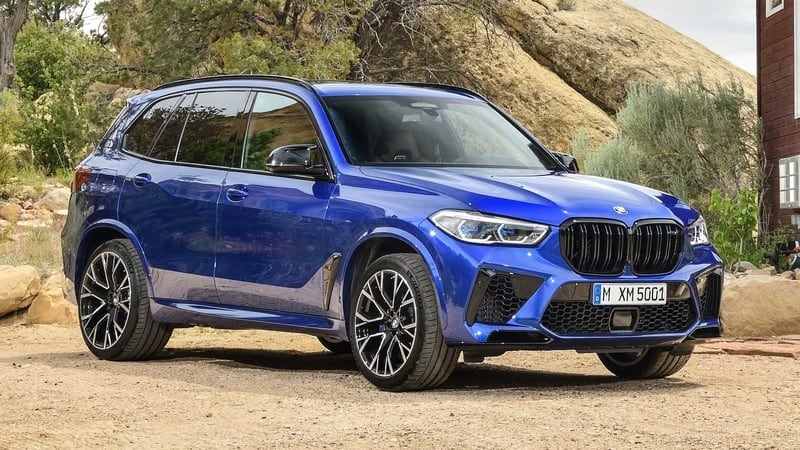
What’s Not in the New 2020 BMW Lineup
01. 2020 6 Series
With the introduction of the all-new flagship 8 Series, the 6 Series 4-door Gran Coupe and 5-door Gran Turismo fastback have practically become redundant overnight. This is reflected in the fact they’ve actually been discontinued for MY 2020.
With the 8 Series currently lacking in 4-door units, the 6 Series models get another year extension before disappearing for good. Even though they’re officially gone, the leftover models should remain on sale throughout most of MY 2020, or until the supplies run down. Considering they first appeared during mid-year 2017, the 6 Series models were also due a makeover they’ll never get, now that the focus has shifted to the replacement series.
The Gran Turismo currently costs $70,300, while the Gran Coupe starts from $81,500. Also, the high-performance Alpina B6 coupe costs at least $124,400 but this version was always intended as a low-volume model, hence its numbers won’t be great. Expect the Bavarians to cut their prices by a slight amount in order to clear out the leftover stock in quick fashion.
The BMW 6 Series comes with two different engines and three different tunes thanks to the Alpina-tuned coupe. The Gran Turismo fastback is available exclusively with a 3.0L turbocharged straight-six engine which develops 335 horsepower. Aside from the straight six, the coupes also get a 4.4L twin-turbo V8 capable of producing 445 ponies. Unlike the 5-door which can only be ordered with a mandatory xDrive all-wheel drive, the 4-doors can also be acquired in a rear-wheel drive form.
Finally, the mentioned Alpina B6 Gran Coupe manages to squeeze as much as 600 horses out of a 4.4L V8 engine. It’s safe to say the 6 Series has served the BMW well over more than 15 years (not counting the first generation which spanned from the mid-seventies to late-eighties), but it was simply time to take things to a higher level. Although larger, more powerful, and more luxurious, the 8 Series also cost much more than their 6 Series predecessors. Something’s gotta give, it would seem.
